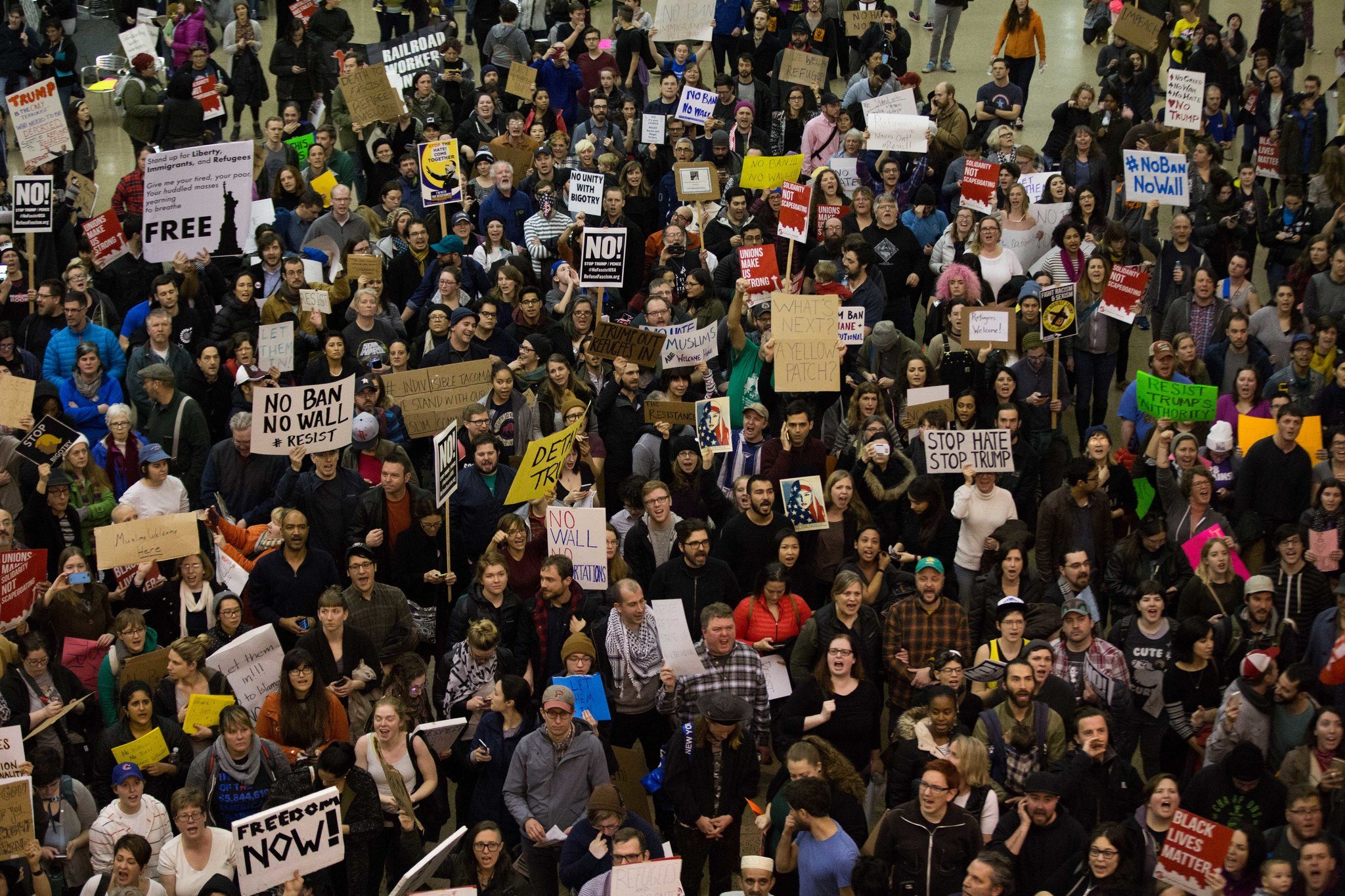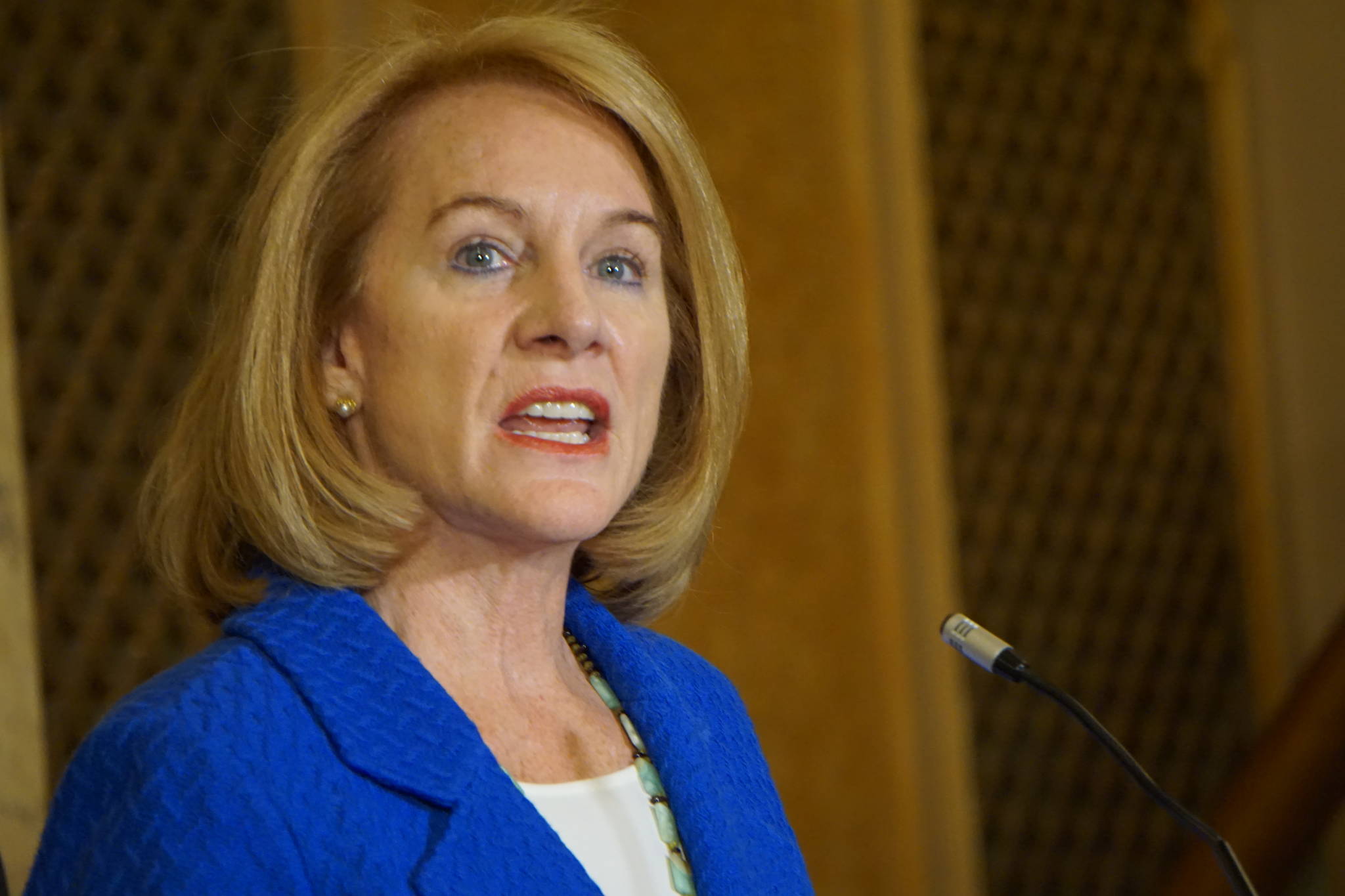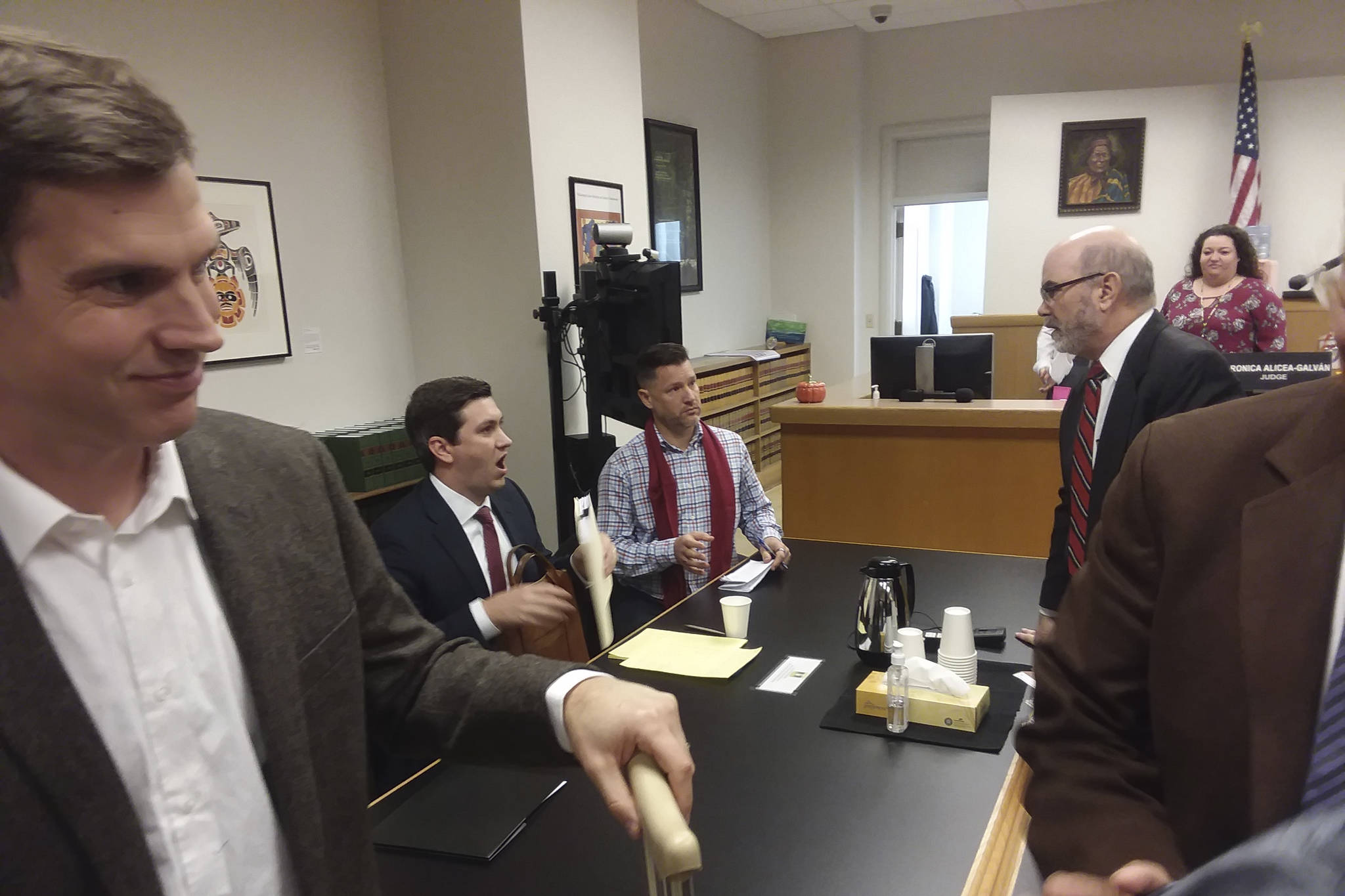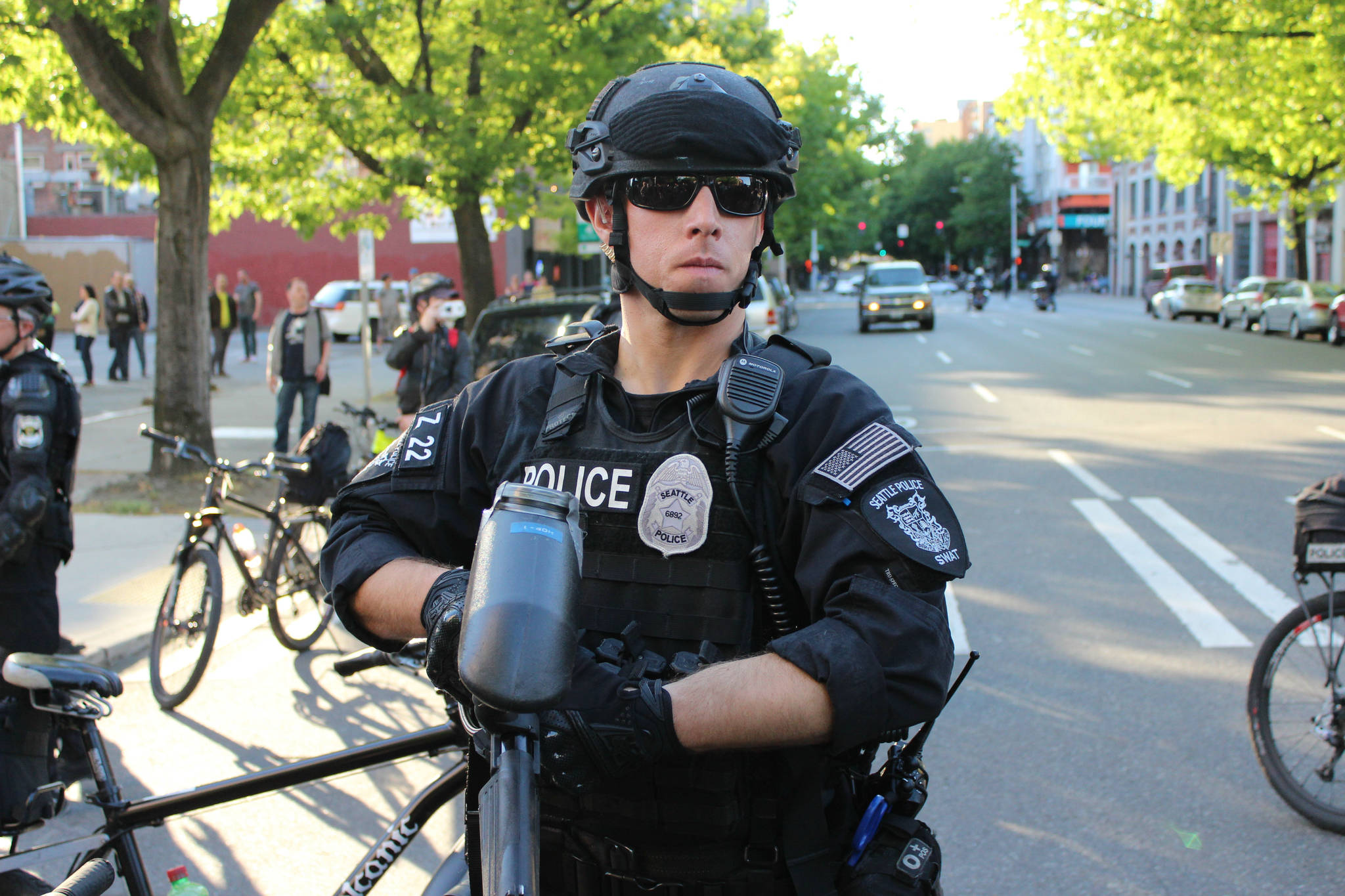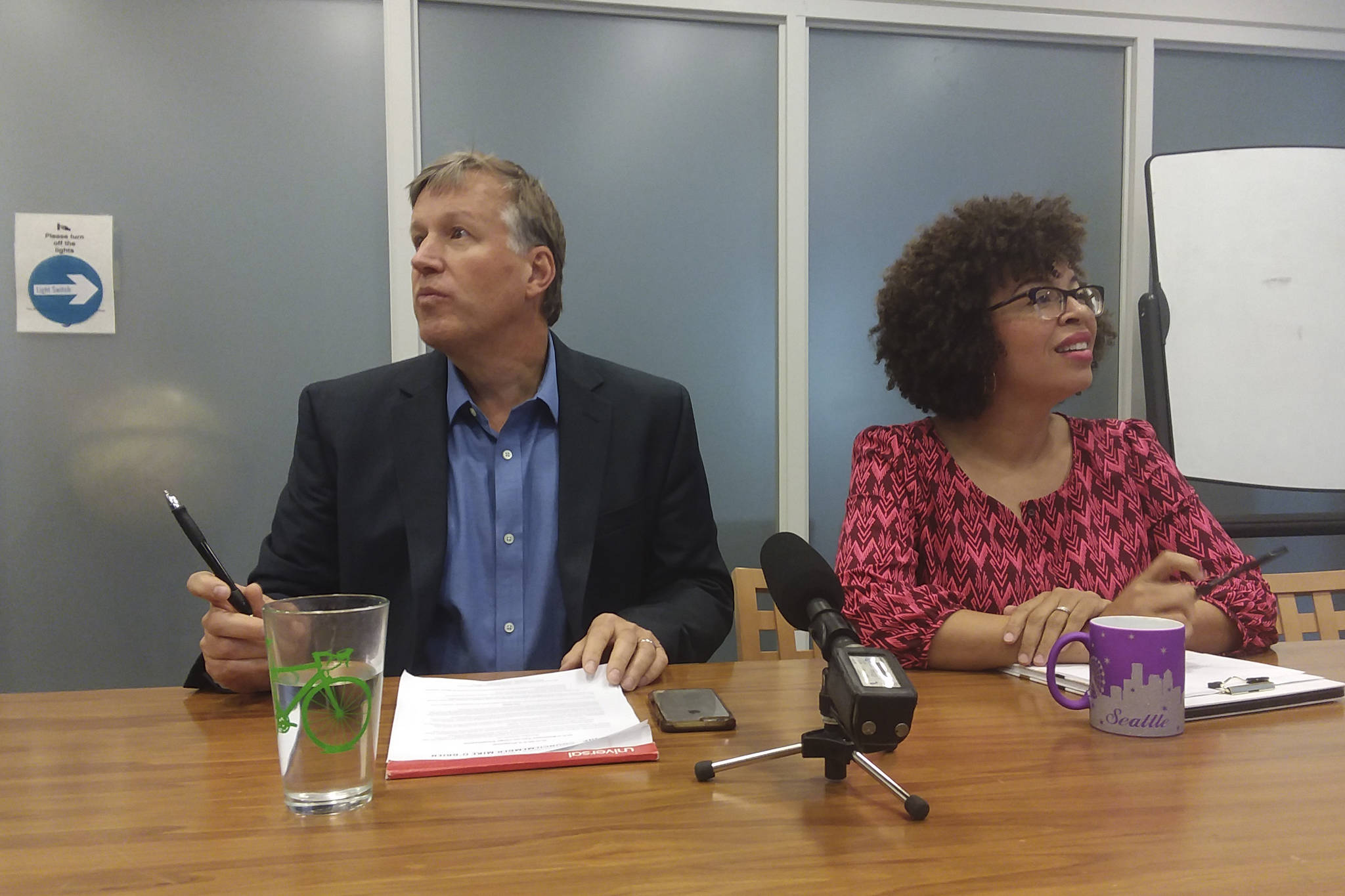On Saturday afternoon, Joseph Redmon was following the news that certain Muslims and immigrants were being held and deported at airports around the country, pursuant to President Donald Trump’s executive order the day before. “I wanted to get involved,” the computer technician says. “I wanted to help the people who are being detained and affected by this.” At 1:18 p.m. he received an e-mail from a colleague who said that his wife was among the detained at Sea-Tac.
Redmon wanted to help, but wasn’t sure how. “Looking around online, I saw a lot of people were in similar situations,” he says—ready to show up for justice, but unsure where to show up to. So at 3:15 p.m., Redmon posted a Facebook event protesting the detentions at Sea-Tac. “I kind of expected it to be me and a few other people,” he says. But it turned out to be him and thousands of other people, including the governor and members of Congress. “It kind of exploded,” Redmon recalls. “People very quickly started replying, sharing, inviting other people … It was pretty incredible, just the organic nature and how quickly it all unfolded.” Redmon emphasizes that he did “almost nothing. The only organizational thing I did was to make the event. From that point on it kind of took on a life of its own.
“If I had waited, someone else would have done it,” he says. “I just happened to be the one who created the event and posted it.”
By 6 p.m., thousands of protesters had packed into the international airport. Redmon credits Seattle City Council member Kshama Sawant and her party, Socialist Alternative, for organizing many of the protesters on the ground. “A lot of political organizers on the ground … basically took over when everyone got there,” he says. “People who knew what they were doing were calling the shots from that point on.” At the airport, Redmon found SA organizer Calvin Priest and made him an administrator of the Facebook event. “I was like, ‘Hey, I don’t know what I’m doing. You wanna help?’ ” he recalls.
This could become a common scene in Seattle as social media, social activism, and a Trump presidency conspire to draw thousands of protesters together at a moment’s notice. And it is raising new questions about how local officials should and should not show support for the protests.
At Sea-Tac, people showed up, talked to each other, and self-organized. One activist who organized a security checkpoint blockade, who has requested anonymity, calls it “a very spontaneous mobilization … People started to step up and take on different roles” without any central authority dictating strategy. “We had so many people,” the activist says, “we realized, ‘We can shut down business.’ ” They marched, held signs, and intermittently blocked security checkpoints to prevent travelers from entering or leaving. “The demand was, no one leaves until the detainees were released.” That decision upset some travelers—witnesses report scuffles as some tried to force their way through the seated crowd—but the protesters were more concerned with freeing detainees than conveniencing airplane riders.
Among the checkpoint blockers: state Sen. Bob Hasegawa, whose family was jailed in Japanese-American internment camps during World War II. The crowd of civil disobeyers grew so large, in fact, that police closed the airport light-rail station around 6:30 p.m. The closure sparked outcry on social media; within half an hour, Sound Transit CEO Peter Rogoff had reversed the decision. Later that night, King County Executive Dow Constantine tweeted, “Thank you to everyone who texted and messaged me about the Sound Transit stoppage tonight … Light rail should run when and where people need it, and request to stop should go up to senior level.” Constantine has promised to review the protocols for stopping service.
Danni Askini, director of the Gender Justice League, says she was part of a group of protesters who strategized with one another using the “people’s mic,” an Occupy Wall Street innovation in which a crowd amplifies a single speaker by repeating their words. “We talked about a strategy of applying pressure” on airport officials by blocking checkpoints and certain exits, she says.
Shortly before 9 p.m., Sawant announced to the crowd that while the detainees had not been released, at least two had been saved from deportation and now had lawyers. “They do have legal counsel with them,” she said, her voice bolstered by both a bullhorn and the people’s mic. “So they are not alone and they will not be abandoned.” It was time to go home. By 9:30 p.m. the protests had largely broken up.
Largely, but not entirely. Hundreds of hardcore resisters remained. After the majority of protesters went home, police—comprising members of 11 different agencies, including Seattle’s—began to escalate violence. Seattle police say they did not arrest anyone or use pepper spray; according to a press release from the Port of Seattle (which operates Sea-Tac Airport), pepper spray was sprayed at protesters at least twice. Askini describes seeing police shoving seated protesters.
Askini thinks police action smacks of hypocrisy. As she tweeted Saturday night, “It is easy for local electeds to criticize Trump; meanwhile, their own police forces attacked peaceful demonstrators.”
Port spokesperson Perry Cooper says, “From our standpoint, [pepper spray] is one of the last things we want to do. But we were at a point where it was about safety and security” because the remaining protesters had “locked arms and were refusing to move.”
Pavan Vangipuram of One America, an immigrant advocacy group founded by Rep. Pramila Jayapal after the September 11 attacks, says he was among the protesters who remained late into the night. (Vangipuram emphasizes that neither he nor One America get credit for organizing the protest; “I just showed up,” he says.) Around 12:30 a.m., he says, police formally ordered the crowd to disperse. They also told him and others to move three feet away from a wall; he did, and extended his arms to show that he was three feet away. “I guess that pissed them off,” he says, “because they were like, ‘That guy, green shirt, get him!’
“One officer surged into the crowd, grabbed me, and threw me across the police line on my face,” Vangipuram says. Several police officers piled on top of him and zip-tied his hands behind his back, he says, and proceeded to arrest about 30 other people in his area. Video from the protest shows at least one other protester being similarly grabbed, tackled, and hogtied. For the next hour and a half, Vangipuram recalls, he and his confederates sat on the ground, handcuffed and waiting. None were told what crime they were under arrest for, he says: “You could tell they were trying to figure out what to do with us.”
A little before 2 a.m., he says, police started asking people where they were from. A prisoner wagon arrived to transport him and 14 other detained protesters to King County Jail, where they were uncuffed and released without being booked, he says. “All they did was write down our names on a loose-leaf sheet of paper, along with our dates of birth,” he says, but none of the police asked for identification or home addresses.
At the time, Vangipuram was just happy he wasn’t in jail, but looking back he wonders about the legality of what happened. “I guess they call this catch and release,” he says. “This seems like a pretty standard tactic where they go in, make a show of manhandling some demonstrators and throwing them to the ground, and it ends up demoralizing the other protesters … It has a chilling effect.” According to a Port press release, 32 people were charged and released on misdemeanor disorderly-conduct charges, and one person was charged with misdemeanor assault.
Saturday’s protest was just one of several at airports across the country, and it was unprecedented for its speed, size, and location. No one planned it: President Trump started deporting immigrants, and people of conscience showed up to stop him. But the thing about unprecedented events is that they set precedents. As Sawant told a crowd of thousands Sunday night at a pro-immigrant, anti-Trump rally in Westlake Park, the Sea-Tac blockades show “the real power of the 99 percent.”
Seattleites have been protesting a lot longer than Trump has been in office, and his ascension is certain to provoke even more rebellion in the future. In the age of social media; in a city of dissent; in a country in a Cold War with itself, the fight for Sea-Tac was just the beginning.
cjaywork@seattleweekly.com
This article has been edited to replace the term “paddy wagon.”
